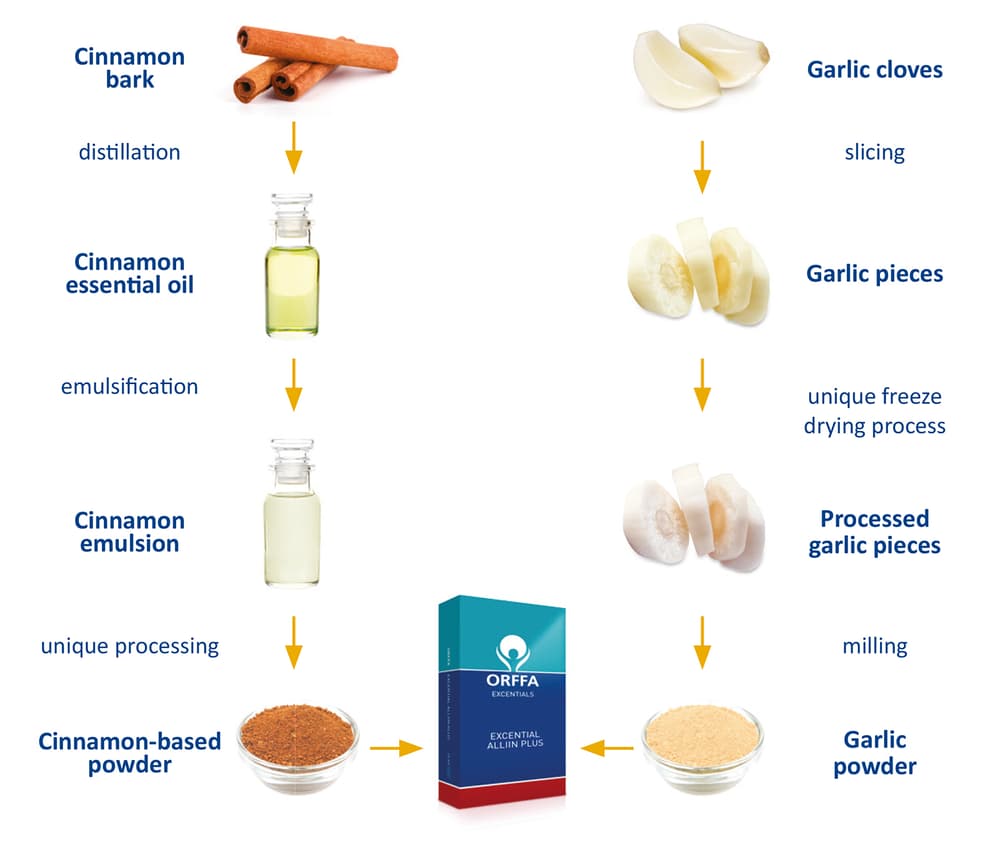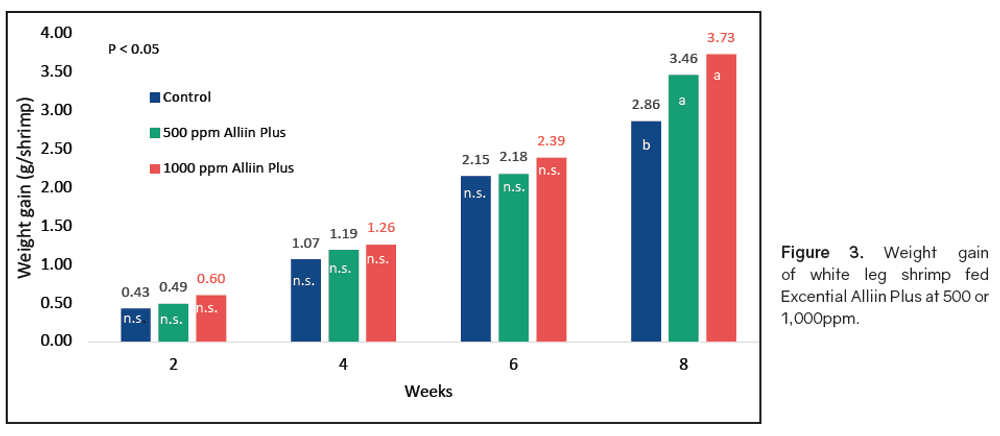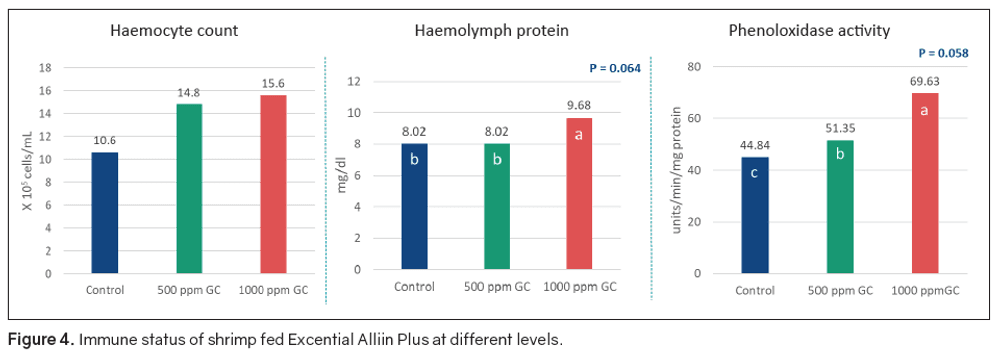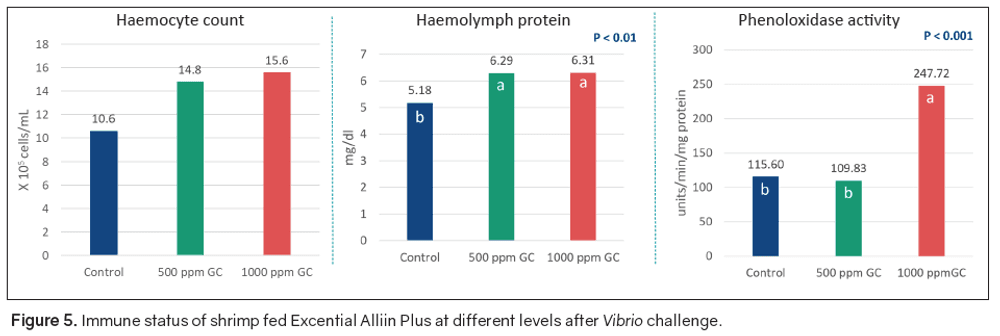Bacterial, viral and parasitical pathogens pose serious challenges for the entire aquaculture sector. However, in shrimp, the harmful effects can be immense, since their immune system is less developed as compared to fish. Therefore, the need to derive a workable strategy to reduce the impact and increase shrimp resilience is necessary. PFAs are believed to have beneficial effects on shrimp performance and health. This was confirmed by a trial at the Kasetsart University in Bangkok, Thailand. Under the guidance of Dr Orapint Jintasataporn, Associate Professor, Faculty of Fisheries, an experiment was conducted to evaluate the efficacy of the garlic-cinnamon (GC) blend in white leg shrimp based on growth performance and immunity, in an unchallenged situation and after a bacterial challenge with Vibrio parahaemolyticus.
To investigate its efficacy, 300 shrimp (2.21 ± 0.06g) were divided into 15 tanks. These tanks were randomly assigned to three dietary treatments, with five replicates per treatment. The control diet was a basal commercial diet with 1,000ppm calcium carbonate added as a placebo. The treatment diets, with low (500ppm) and high (1000ppm) content of garlic-cinnamon blend, are described in Table 2. After 8 weeks of feeding, shrimp growth performance was measured, in terms of weight gain, specific growth rate (SGR), feed intake and feed conversion ratio (FCR). Additionally, after 4 weeks of feeding, the total haemocyte count, haemolymph protein and phenoloxidase activity were measured and compared among the treatments. After 8 weeks in the feeding trial, shrimp were challenged with V. parahaemolyticus. After 12 hours, the immune parameters were measured again together with lysozyme activity, superoxide dismutase activity and glutathione peroxidase activity.







